Bathroom Readers' Institute's Blog, page 127
October 14, 2014
Ask Uncle John Anything: Blue By You
Uncle John knows pretty much everything—and if he doesn’t, he heads his massive research library, or puts one of his many associates on the case. So go ahead: In the comments below, ask Uncle John anything. (And if we answer your question sometime, we’ll send you a free book!)
Where does the phrase “blue haired ladies” or “blue hairs” to describe prim and proper older woman come from?
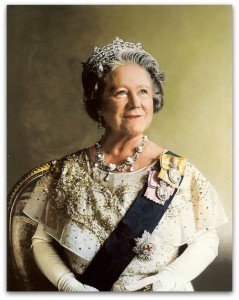 No, you weren’t born so late that you missed a time period in which senior citizens dyed their hair strange, shocking, or unnatural characters like they were punk rockers or Marge Simpson. From the 1930s through to about the mid-1970s (or so), it was common to see women with silver hair streaked or dotted with blue.
No, you weren’t born so late that you missed a time period in which senior citizens dyed their hair strange, shocking, or unnatural characters like they were punk rockers or Marge Simpson. From the 1930s through to about the mid-1970s (or so), it was common to see women with silver hair streaked or dotted with blue.
The product used was called a blue rinse, a dilute hair dye. Brands like Roux and Fanci-Full promised to turn gray or white hair, which can often adopt an undesirable yellow hue, into something more attractive. If it was done correctly, it gave graying hair a distinguished silvery tint, something close to the platinum blonde color of classic Hollywood movie stars like Jean Harlow. It was also favored by Queen Elizabeth the Queen Mother. When applied poorly, as it was often done, it turned hair blue, purple, or bluish purple.
The phrase isn’t as well known in the U.S. anymore, or for the last 30 years or so, with the widespread use of more effective hair dyes that give formerly white or graying hair a more natural brown, black, or blonde appearance. In England, however, the phrase “blue hairs” isn’t used in favor of “blue rinse brigade.” While few older English people still have blue hair, it’s a “dyed in the wool” reference (pun intended), and a negative one at that, to describe older, middle-class conservatives…and it’s not the least bit affectionate. If it’s used, it’s meant to ridicule older people for their out-of-date values as well as their cosmetic choices. The last chain in the Western world to carry blue rinses was Asda, and it stopped selling them in 2006 due to low demand.
The post Ask Uncle John Anything: Blue By You appeared first on .
October 13, 2014
Big Trouble in a Little Bubble
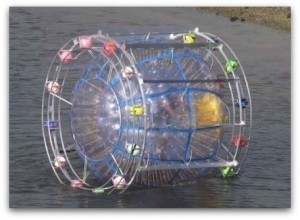 The thing about bubbles is that they usually pop.
The thing about bubbles is that they usually pop.
Reza Baluchi is the sort of guy that loves to perform extraordinary feats of physical endurance. The former Olympian has biked his way across 55 countries on six continents and once ran 11,720 miles around the perimeter of the United States. Unfortunately, he may go down in history as “That Guy in the Bubble Who Had to be Rescued By the Coast Guard.”
A foolhardy attempt to raise money for charity by running around the Bermuda Triangle in an inflatable bubble concluded with him giving up and calling for help on October 4. A few hours later, the Coast Guard found him about 70 miles off the coast of Florida. The 3,500-mile trek was certainly ambitious, especially the way Baluchi planned to do it. He planned to sleep for only three hours a night, in a hammock he packed in the bubble. To keep cool, he planned to take the occasional dip into the ocean (with the bubble attached to his foot with a cable so it wouldn’t float away).
While he’s one of the world’s toughest marathon runners, Baluchi was no match for the strong currents of the Atlantic Ocean. If everything had gone as planned, his “human powered’ voyage would have led him from Florida down to Bermuda, over to Puerto Rico, and back up to Florida.
After receiving reports about a “strange craft” on October 1, a Coast Guard ship named the Cutter Weber raced to the scene. When the crew discovered that Baluchi’s bubble was only stocked with water, protein bars, and a few other supplies, they tried to get him to toss in the towel. He told them that he had spent two years planning the trip and wasn’t about to give up.
Three days later, Baluchi activated a homing beacon after succumbing to exhaustion. He was pulled out of the water via helicopter and rushed to a medical facility in Florida. “Part of his effort was to make world peace but he got caught up in the Gulf Stream,” a Coast Guard representative told the press. “The chances of muscling out of it were pretty low.”
However, just as we were going to press with this, we noticed a post on Baluchi’s Facebook page saying that he had not actually been asking for rescue—he states that he accidentally pressed his transponder button, which summoned the Coast Guard, which swooped him up, in what he says was just too soon. Baluchi says he passed a medical exam with flying colors, although his bubble was later destroyed when a friendly fishing boat tried to tow it to shore for him.
The post Big Trouble in a Little Bubble appeared first on .
‘The Simpsons’ Ought to Live in Washington
The iconic TV family shouldn’t live in “Springfield.” Here’s why.
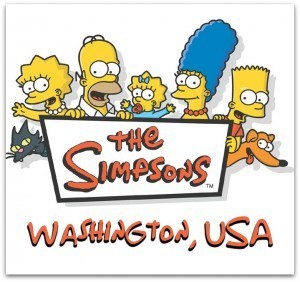 In the late 1980s, The Simpsons creator Matt Groening reportedly based the show in a town called Springfield because it was widely believed to be the most common town name in the United States, and so the most generic and non-specific. He wanted the town to be set in “Anytown, U.S.A.,” and so he did, and named it Springfield. But because Groening is from Oregon, where there’s a moderately large city named Springfield, fans speculated that that Springfield was the “real” one, meaning the Springfield the one from The Simpsons was based on. It’s not true.
In the late 1980s, The Simpsons creator Matt Groening reportedly based the show in a town called Springfield because it was widely believed to be the most common town name in the United States, and so the most generic and non-specific. He wanted the town to be set in “Anytown, U.S.A.,” and so he did, and named it Springfield. But because Groening is from Oregon, where there’s a moderately large city named Springfield, fans speculated that that Springfield was the “real” one, meaning the Springfield the one from The Simpsons was based on. It’s not true.
Springfield is certainly a common name for a town. How may are there in the U.S.? At last count, there are 31. But despite that prevalence, it’s not actually the most common city or town name in the country. That honor goes to Washington. If Groening really wanted the Simpson family to live in the most commonly named place, they should live in Washington, U.S.A.
There are a whopping 38 cities, towns, villages, census designated places, and townships in the U.S. that are named some form of Washington. The biggest is Washington, D.C. Oddly, there are six different places in New Jersey named Washington, including the borough of Washington, the Township of Washington in Bergen County, and four separate entities called Washington Township. There are eight towns called Washington in Wisconsin as well. In total, there’s at least one Washington in 24 states. A notable absence on that list? The state of Washington has no individual cities called Washington.
The second-most common place name in the U.S. is Franklin, with 33 instances in 30 states.
The post ‘The Simpsons’ Ought to Live in Washington appeared first on .
October 10, 2014
Fake-or-Fact Friday: Death and TV Edition
Here are three weird news stories about memorializing the departed that somehow involve television. Two of the stories are true, and one we made up. Which one is false? The answer is at the end of the post.
A.
A man posted on Instagram a photo of the gravestone of his recently deceased brother. The perished was an avid beer drinker and home brewer, and loved beer almost as much as he loved The Simpsons. Per his request, and as shown in the photo, his epitaph read, “To alcohol: the cause of, and solution to, all of life’s problems. It’s a quote from Homer Simpson, taken from a Simpsons episode in which Springfield bans, and then un-bans, alcohol.
B.
A woman whose brother recently died posted on a message board dedicated to discussion of the cult TV comedy It’s Always Sunny in Philadelphia. She wanted to let other fans know that her brother was probably the show’s biggest fan, because he requested that the epitaph on his headstone be a quote from the series. “Dayman, fighter of the Nightman,” his grave reads, cryptically, referring to an episode in the which the show’s characters stage a bizarre musical about a superhero called Dayman/Nightman.
C.
Willie McCoy was a professional backup and session singer, but is best known for singing Chili’s “I want my baby back, baby back, baby back” TV jingle that ran thousands of times on TV in the late 1990s. McCoy sang what he knew—he was a huge barbecue enthusiast. When he died, his family worked with a Dallas funeral home to give him a barbecue-themed memorial service. Pallbearers in chef hats carried the smoker-shaped casket, and guests dipped their baby back ribs in a barbecue sauce fountain.
Loading…
Want more things that sound true…but aren’t? Then check out Uncle John’s Fake Facts. (Really!)
The post Fake-or-Fact Friday: Death and TV Edition appeared first on .
October 7, 2014
The Longest Games in Baseball History
Baseball history was made this weekend…very, very slowly and over a very, very long period of time.
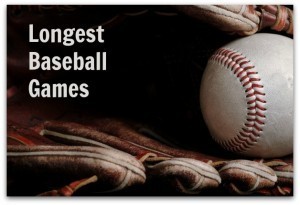 Longest playoff game: Last Saturday night, the longest game in Major League Baseball postseason history took place. In game two of their National League Divisional Series, the San Francisco Giants beat the Washington Nationals 2 to 1 after 18 innings of play, which, in terms of innings played, equals two games.
Longest playoff game: Last Saturday night, the longest game in Major League Baseball postseason history took place. In game two of their National League Divisional Series, the San Francisco Giants beat the Washington Nationals 2 to 1 after 18 innings of play, which, in terms of innings played, equals two games.
Longest game (old timey baseball): In May 1920, the Boston Braves and Brooklyn Dodgers played to a tie after 26 innings—it got too dark for the players to see. Amazingly, those 26 innings were played in just under four hours—not much longer than a standard game today.
Longest game (modern era): The longest game played with an actual winner took place in May 1984. The Chicago White Sox beat the Milwaukee Brewers 7 to 6 after Harold Baines hit a home run in the bottom of the 25th inning. A 1974 game between the St. Louis Cardinals New York Mets also went for 25 innings, but the Chicago-Milwaukee slog took longer to play: eight hours and six minutes, separated over two nights due to a league curfew rule that prohibited a new inning to start after 1 a.m.
Longest game overall: The longest game in pro baseball history was a AAA-level minor league game in April 1981. The Pawtucket Red Sox beat the Rochester Red Wings 3 to 2…after 33 innings. The league president called a temporary stop to the game at 4:07 a.m., at which point a manager had been ejected, all the players were exhausted, and 19 fans remained in the stands. The final inning was played about seven hours later.
The post The Longest Games in Baseball History appeared first on .
Impossible Questions: Reggie Jackson’s Finest Hour (Answered!)
Think you’ve got the answer? Keep reading to see if you nailed it.
What did Reggie Jackson do in 1972 that hadn’t been accomplished in Major League Baseball in more than five decades?
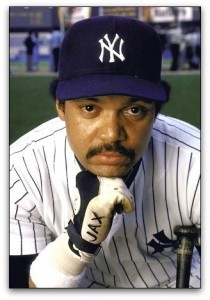 Believe it or not, Jackson was the first big leaguer in 58 years to wear a mustache.
Believe it or not, Jackson was the first big leaguer in 58 years to wear a mustache.
When he took the field in mid-April 1972, the charismatic, popular hitter for the Oakland A’s had a mustache, which was a growing style for American men in the 1970s. The Baby Boomer/counterculture generation that came of age in the late 1960s and early ‘70s made facial hair fashionable again, and it was something of a political statement after the conservative, clean-cut 1950s and early 1960s. Jackson had a mustache in 1972 because it looked good, and it was stylish.
But it was still controversial. When Jackson reported for spring training, A’s owner Chuck Finley ordered him to shave it off. Jackson, who had a history of clashing with management, refused. He got away with it because he was the team’s star player. Jackson’s mustache, and its rebirth in baseball, subsequently became newsworthy and Finley embraced it, holding a special “Mustache Night” at a Oakland home game, giving his other players a small bonus if they grew a ‘stache for the game. That night baseball mustache history was made. For while almost the entire team grew a mustache and shaved them right after the game, Catfish Hunter and Rollie Fingers didn’t. Hunter’s bushy mustache and Fingers handlebar mustache became iconic.
By the way, the last time a baseball player tried to have a mustache was in 1936. French Bordegaray of the Brooklyn Dodgers grew one, but manager Casey Stengel made him shave it before the season began. The last known player to have a mustache and wear it during a game was catcher Wally Schang, who played for the Philadelphia Athletics in 1914.
Need more impossible questions? Check out Uncle John’s Impossible Questions.
The post Impossible Questions: Reggie Jackson’s Finest Hour (Answered!) appeared first on .
October 6, 2014
Some Weird European Beers
Keep these strange brews in mind when you get bored with all that pumpkin ale you’ve been drinking this season.
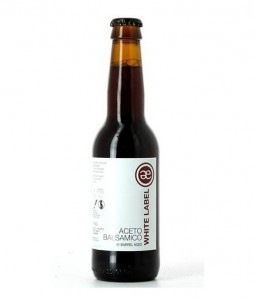 Aceto Balsamico
Aceto BalsamicoIt tastes like someone at the Emelisse brewery in the Netherlands dumped balsamic vinegar into this beer. And that’s exactly what happened. While the stuff tastes great on a salad or as the star of a reduction sauce, it’s not so great when mixed into a Flemish-style oud bruin (“old brown”) beer.
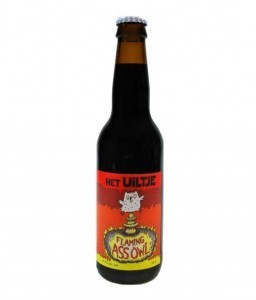 Flaming Ass Owl
Flaming Ass OwlThis Dutch beer is considerably better tasting. It’s noted for its rich body, smooth sweetness, and its not-so secret ingredient: Trinidad Scorpion peppers. The chilies are native to Trinidad and Tobago, and, according to a 2012 study at New Mexico State University, they’re the hottest peppers on the planet. (While the beer is definitely spicy, it’s not that spicy.)
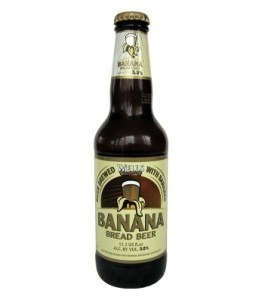 Banana Bread Beer
Banana Bread BeerThis won the “Beer of the Festival” award at the 2002 London Drinker Festival, although it could do just fine on The Great British Bake Off, too. Made by England’s Wells & Young, it contains hints of lemon, peppery hops, and other ingredients that give it the unmistakable taste of freshly-baked banana bread.
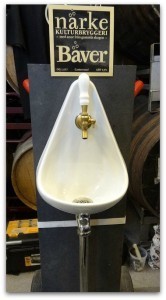 Närke Bäver
Närke BäverWe saved the weirdest one for last. This beer, which is crafted at Sweden’s Närke Kulturbryggeri brewery, contains what tastes like vanilla. However, that isn’t because its brewers put actual vanilla in the barrels. Instead, they used castoreum, a yellowish secretion that comes from the North American Beaver’s castor sacs…located right next to the anus. The beavers use the secretion to mark territory, but more decades castoreum has been used in perfumes and as a food additive because it tastes like, and is cheaper than, vanilla. If you think you’ve never had it, you’re probably wrong, because it’s frequently included in ice cream and innocuously listed in the ingredients as “natural flavoring.” The brewery has been featuring this beaver brew at festivals around Europe, and serve it from a tap that was built out of a urinal.
The post Some Weird European Beers appeared first on .
Impossible Questions: Reggie Jackson’s Finest Hour
Think you know the answer to this question? Think you can get it? Good luck…and come back tomorrow to see if you’re right.
What did Reggie Jackson do in 1972 that hadn’t been accomplished in Major League Baseball in more than five decades?
Want more impossible questions? Check out Uncle John’s Impossible Questions.
The post Impossible Questions: Reggie Jackson’s Finest Hour appeared first on .
October 3, 2014
Here’s Why Americans Love Pumpkin-Flavored Things
It started with the Starbucks Pumpkin Spice Latte. Now, it seems like everything is pumpkin-kissed this time of year.
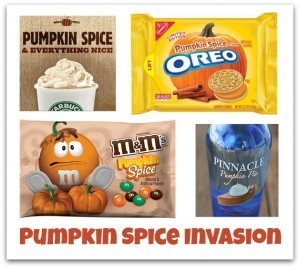 Sales of pumpkin-flavored drinks and snacks have dramatically increased since the 1990s. Pumpkin beer alone has been a standout, with sales increasing by a staggering 1,500 percent over the past decade, and accounting for two-thirds of all autumnal beer sales with revenues of $15 million.
Sales of pumpkin-flavored drinks and snacks have dramatically increased since the 1990s. Pumpkin beer alone has been a standout, with sales increasing by a staggering 1,500 percent over the past decade, and accounting for two-thirds of all autumnal beer sales with revenues of $15 million.
And that’s just a drop in the bucket. Pumpkin-flavored foods earned $308 million in the U.S. in 2013. What’s up with continuing, annual trend? Industry watchers theorize that it’s all in the marketing. Starbucks hypes the fall release of its trendsetting Pumpkin Spice Latte like an event, and then pulls it after a few months, creating a “must buy now” effect. The beer companies have stressed marketing their beers to women, who their research says prefer sweeter brews, like the pumpkin ones.
One pumpkin item that has dropped, ironically enough? Pumpkins. According to the USDA, the average American in 1998 ate 6.5 pounds of pumpkin each year. In 2012, that number dropped to 5 pounds. That’s because it’s not pumpkins we love, it’s pumpkin spice. The PSL at Starbucks contains no pumpkin, but the spice blend most associated with pumpkin pie: cinnamon, allspice, and cloves, for example.
To keep up with demand, Starbucks rolled out the PSL in September, its earliest ever launch. McDonald’s has its own take on the drink as well. Other pumpkin (spice) products now available: Pumpkin Spice M&Ms, Pumpkin Spice Oreos, Pumpkin Spice Jell-O, pumpkin treats at Dunkin’ Donuts, pumpkin cheesecake ice cream at Baskin-Robbins, and Pinnacle’s Pumpkin Pie Vodka. It’s not even just for humans. There are two special pumpkin blends now available of Purina Dog Chow.
When will the craze finally die down? Probably around Christmas…and then it’ll come right back next fall.
The post Here’s Why Americans Love Pumpkin-Flavored Things appeared first on .
September 30, 2014
Let’s Get Wild (With Some Wild Rice Facts)
How wild are these facts about wild rice? Pretty wild! Okay, they’re not that wild, but they are pretty interesting.
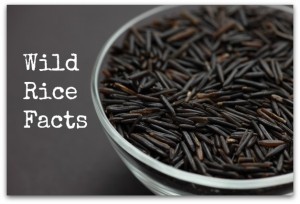 First of all, wild rice isn’t rice…but it is wild. It’s actually an aquatic grass with grains that look, feel like, and taste like rice. Its closest relatives are other cereals, such as corn, wheat, rice, and barley, as well as bamboo.
First of all, wild rice isn’t rice…but it is wild. It’s actually an aquatic grass with grains that look, feel like, and taste like rice. Its closest relatives are other cereals, such as corn, wheat, rice, and barley, as well as bamboo.Wild rice is also known as “water oats,” “Indian rice,” or “Canada rice.” That’s because it’s the only grain native to North America, primarily in lakes and riverbeds in and around Minnesota and central Canada. Today, however, most commercial varieties are cultivated in manmade rice “paddies” in California.
The wild rice that was grown and harvested for centuries by native Americans was naturally a brownish-green color. Wild rice producers in the 20th century, however, began to hybridize different wild rice varieties, leading to the commercially dominant style of wild rice on the market today: black-grained.
Many wild rice producers still use the traditional method of harvesting, which is both a simple, straightforward process…and hard work. Two people travel by a canoe out into the water where the rice is ready to harvest. The “poler” sits in the back of the canoe and uses an oar to push the canoe through the water and plants. The “knocker” stands up in the middle of the boat and uses a stick to bend the 10-foot-tall wild rice stalks over the boat. He uses another long stick to knock grains out of the stalks and into the boat.
Harvested grains are then taken to shore, where, traditionally, they were heated in an open drum over a fire. That not only imparts a smoky flavor, but dries and preserves the rice. (Today, wild rice grains are industrially par boiled.)
The post Let’s Get Wild (With Some Wild Rice Facts) appeared first on .



